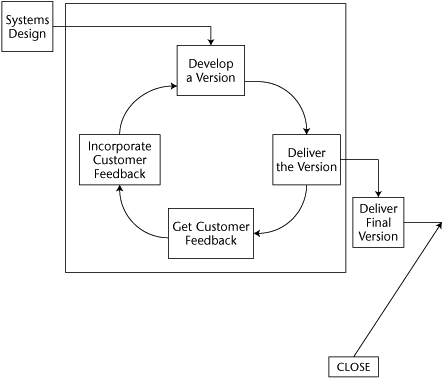Iterative SDPM Strategy for the Closing Phase of the Evolutionary Development Waterfall Model
Figure 22-2 illustrates the Closing Phase of the SDPM strategy for the Evolutionary Development Waterfall model.
Figure 22-2. The Closing Phase of the SDPM strategy for the Evolutionary Development Waterfall model

The Evolutionary Development Waterfall is not structured to deploy partial solutions at the close of each iteration, although that is not excluded from the model. Formally there is only one close and that is when the customer is satisfied and the final version can be released. That close is identical to the Linear SDPM strategy situation. The customer can opt for an intermediate release but probably only for the purposes of getting outside opinions about functions and features from selected affected groups. The model does not include a formal deployment of intermediate solutions to the end user as in the case of the Incremental SDPM strategy.
For the Iterative SDPM strategy, there are two types of lessons learned to discuss.
Iteration Lessons Learned
Each project that follows the Evolutionary Development Waterfall model presents the development team with a need to learn to work with the customer. Every iteration presents the development team with information to help it to work more effectively and efficiently with their customer team. Even if the development team has worked ...
Get Effective Software Project Management now with the O’Reilly learning platform.
O’Reilly members experience books, live events, courses curated by job role, and more from O’Reilly and nearly 200 top publishers.

